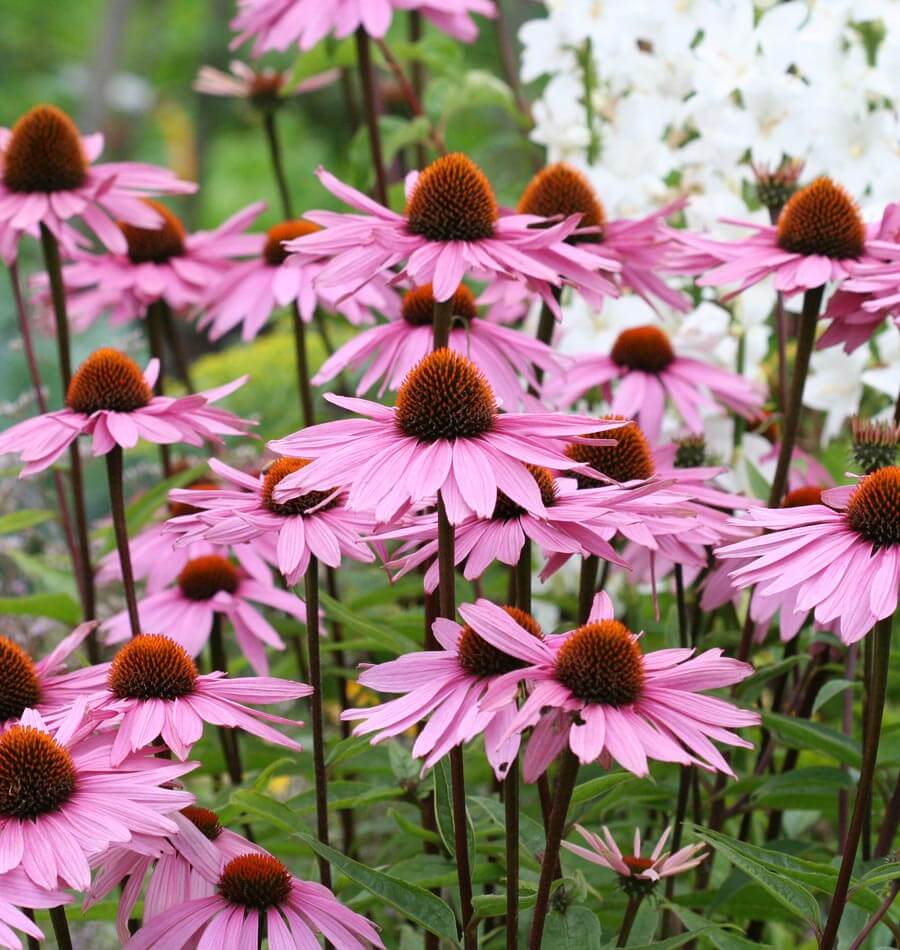

It is often used in combination with goldenseal or vitamin C. Echinacea is available commercially in a number of forms: dried root or herb, liquid extract, powder, capsules and tablets, and creams and gels. Today, nearly all parts of the plant are used, including the root, leaves, flowers, and seeds. Powdered Echinacea root can be purchased at theĮchinacea root is the part which has been used historically in European and American herbalism. I put washed, dried roots in a gallon jar with a lid for later use. The roots can be used immediately, or dried for later use. Wash and chop the clean roots before you dry them. These plants are high quality and guaranteed to grow! Harvest the roots in the spring or fall. Instead, I recommend buying plants from. Echinacea can grow in fairly poor and dry soil, but I’ve found it difficult to start this plant from seed.
#PURPLE CONEFLOWER HERB HOW TO#
▪ Lymph glands, sore throat How to Grow it:Ĭare: Plant seeds in full sun, or light shade in hotter climates.
#PURPLE CONEFLOWER HERB SKIN#
▪ Many skin conditions: burns, insect bites, ulcers, psoriasis, acne and eczema ▪ Herpes, an inflammation of the skin and mouth Echinacea is considered an effective treatment against the following conditions: What Echinacea Can Do:Įchinacea prevents the formation of an enzyme which destroys a natural barrier between healthy tissue and damaging organisms. It also contains copper, iron, tannins, protein, fatty acids and vitamins A, C, and E. The constituents of Echinacea include essential oil, polysaccharides, polyacetylenes, betain, glycoside, sesquiterpenes and caryophylene. Whether you use Echinacea as a cure for strep throat, wounds, and infections, or just put a bouquet on the table in a vase, Echinacea is a necessary addition to your herb garden! Echinacea is Made of: Then I discovered those lovely purple and yellow flowers were Echinacea plants. I was distressed to see her chopping off the lovely blossoms and tossing them aside only to carry home the dirty root as though it were treasure. One day Mom went down to the herb garden and dug up a clump of those beautiful flowers.

The blooms didn’t smell that great, but they sure were amazing to look at. I thought, “Wow, Mom finally got some good taste and planted flowers for a change.” I loved to visit the herb garden and stand in the waist-high Purple Coneflowers and watch the fat bumblebees hop from cone to cone, gathering nectar. Then, around mid-summer, a strip of “weeds” along the whole length of the garden began to bloom into big purple-and-yellow blossoms that were spectacular in beauty. However, it all looked like weeds to me short weeds, tall weeds, stinky weeds, and good-smelling weeds. It took about two years for the herb garden to begin showing serious clumps of greenage here and there. She ordered seeds of dozens of different herbs and planted them in various beds around the herb garden. When I was 16 years old, my mom decided to plant a large herb garden, complete with a little fish pond and waterfall. Thousands of doctors currently use Echinacea for treating infectious diseases. This native American herb has an impressive record of laboratory and clinical research. Echinacea is the best known and researched herb for stimulating the immune system. The new American settlers quickly adopted the therapeutic use of the plant, and since that time it has become one of the top selling herbs in the United States. The Plains Indians used various species of Echinacea to treat poisonous insect and snake bites, toothaches, sore throat, wounds, as well as mumps, smallpox, and measles. ▪ Echinacea tennesseensis - Tennessee Coneflower Interesting Facts! ▪ Echinacea simulata - Wavyleaf Purple Coneflower ▪ Echinacea sanguinea - Sanguin Purple Coneflower ▪ Echinacea purpurea - Purple Coneflower, Eastern Purple Coneflower ▪ Echinacea paradoxa - Yellow Coneflower, Bush’s Purple Coneflower ▪ Echinacea pallida - Pale Purple Coneflower ▪ Echinacea laevigata - Smooth Coneflower, Smooth Purple Coneflower ▪ Echinacea atrorubens - Topeka Purple Coneflower ▪ Echinacea angustifolia - Narrow-leaf Coneflower These are drought-tolerant perennial plants which can grow up to six feet tall! The most common types are Echinacea Purpurea and Echinacea Angustifolia. The Purple Cone Flower Botanical InformationĪlso known as Purple Coneflower, and Snakeroot.Įchinacea is a genus of nine species of flowering plants all native to eastern North America.


 0 kommentar(er)
0 kommentar(er)
